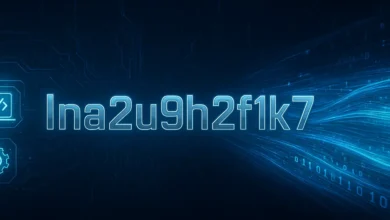The Significance of AWT88K: Exploring Its Meaning and Contextual Applications

In the digital and technological world, acronyms and abbreviations serve as shortcuts, facilitating smoother communication in specialized fields. AWT88K is one such term that has emerged across different sectors, especially in the realms of software development, computing, and cryptography. However, the term AWT88K may not be immediately clear to everyone. What does it mean, and why is it important? In this blog post, we will explore the various meanings and uses of this, providing a comprehensive understanding of this intriguing acronym.
Understanding AWT88K: Breaking Down the Components
To grasp the full significance of AWT88K, it is essential to break it down into two main parts: AWT and 88K. Each of these components holds different meanings depending on the context in which they are used.
AWT: Abstract Window Toolkit in Software Development
AWT refers to the Abstract Window Toolkit, a set of application programming interfaces (APIs) used in Java programming for creating graphical user interfaces (GUIs). Introduced in the early 1990s, AWT was one of the first frameworks designed to allow developers to build interactive and visually appealing user interfaces for Java applications.
Before more advanced GUI libraries like Swing and JavaFX came into existence, AWT was the go-to framework for developers building graphical interfaces. Despite its initial popularity, AWT faced challenges such as limited customization and cross-platform inconsistencies. Nevertheless, it laid the groundwork for future developments in GUI creation.
In modern software development, AWT is mostly seen in legacy systems. Understanding AWT is crucial for working with older Java applications or for maintaining systems that still rely on it.
88K: The 88K Microprocessor and Its Legacy
The second part of the acronym, 88K, holds historical significance in the context of computing hardware. It refers to the 88k microprocessor architecture, which was developed by MIPS Computer Systems in the 1980s. The 88k series of processors were known for their high performance and were widely used in workstations and high-end computing systems during that era.
The 88K processors were one of the key players in the shift toward more advanced and capable computing systems, helping to drive the evolution of powerful computational devices. These processors were designed to handle complex tasks and were used in fields like scientific computing and data-intensive applications.
For anyone working with older computer systems, especially in the realm of retro computing or hardware preservation, the term 88K may often come up when discussing legacy hardware or architecture.
Contextual AppliAWT88Kcations of AWT88K
Now that we have a basic understanding of the individual components of AWT88K, it’s important to explore how this acronym is applied in different fields. The term can refer to both software-related concepts and hardware history, demonstrating its broad applicability.
1. AWT88K in Software Development
In Java programming, AWT88K could denote a version of the Abstract Window Toolkit that was either developed or optimized for certain hardware systems. As older Java-based applications may still rely on AWT for GUI development, recognizing the presence of AWT could indicate specific components or libraries used in a particular system or version of the software.
For software developers maintaining or working with legacy Java applications, understanding the role of AWT88K helps identify potential updates or challenges related to the system’s graphical interface.
2. AWT88K in Hardware
As mentioned earlier, 88K refers to the 88k microprocessor, a powerful processor architecture developed by MIPS Computer Systems. These processors were widely used in high-performance computing systems and workstations during the 1980s and early 1990s.
In the hardware world, AWT88K could be used as shorthand when referring to these older processors. For those involved in retro computing, embedded systems, or hardware emulation, recognizing the 88K processor’s legacy is essential for understanding the limitations and capabilities of these systems.
3. AWT88K in Cryptography and Security
Although the primary usage of AWT88K is tied to software and hardware, it could also have applications in the field of cryptography. In some cases, AWT88K might appear as part of a cryptographic key or digital signature, where random strings of characters are generated for security purposes.
For professionals in the field of cybersecurity, recognizing these kinds of strings or hashes is crucial for ensuring secure transactions and data integrity. While AWT is not widely known in the cryptography community, it could theoretically represent part of a secure identifier used in digital communications.
4. AWT88K in Online Communities
In certain online communities, AWT88K may be used as part of an inside joke or jargon, often with no direct relation to its original technical meanings. Many online forums, particularly those within tech or gaming circles, create their own unique acronyms or abbreviations that gain popularity over time. In these spaces, AWT might take on entirely new meanings or functions, depending on the shared culture of the group.
Why Understanding AWT88K Matters
Understanding the term AWT88K is essential for various reasons, especially if you’re involved in software development, computing, or cryptography. Here’s why:
- Tech Development: If you’re working with legacy systems or Java-based applications, knowledge of AWT88K can help you maintain or update software that relies on the Abstract Window Toolkit.
- Computing History: For those interested in retro computing or hardware preservation, AWT is a reminder of the 88K microprocessor’s role in advancing computing technologies during the 1980s.
- Security and Cryptography: In security fields, understanding how terms like AWT might relate to cryptographic identifiers or signatures can enhance your knowledge of secure systems and digital communication.
- Clear Communication: Whether you’re in a programming environment, discussing hardware systems, or engaging with online communities, understanding AWT helps in clear and effective communication.
Conclusion
In conclusion, AWT88K is a term that encompasses various meanings depending on the context in which it is used. Whether it’s referencing the Abstract Window Toolkit in Java programming, the 88k microprocessor in computing history, or even cryptographic identifiers, AWT serves as a multi-faceted acronym that bridges the gap between software development, hardware systems, and digital security.
By understanding the full scope of AWT88K, you can gain valuable insights into different technical fields and ensure better communication and problem-solving when dealing with legacy systems or advanced technologies.
FAQs
Q: What does AWT88K mean in software development?
A: In software development, AWT88K could refer to the Abstract Window Toolkit (AWT) used for creating graphical user interfaces in Java applications. The 88K may denote a specific version or component.
Q: How does AWT88K relate to hardware?
A: The 88K refers to the 88k microprocessor, a key processor used in high-performance computing systems during the 1980s.
Q: Can AWT88K be used in cryptography?
A: Yes, AWT88K could theoretically be used in cryptographic contexts as part of a unique identifier or digital signature in secure communications.



